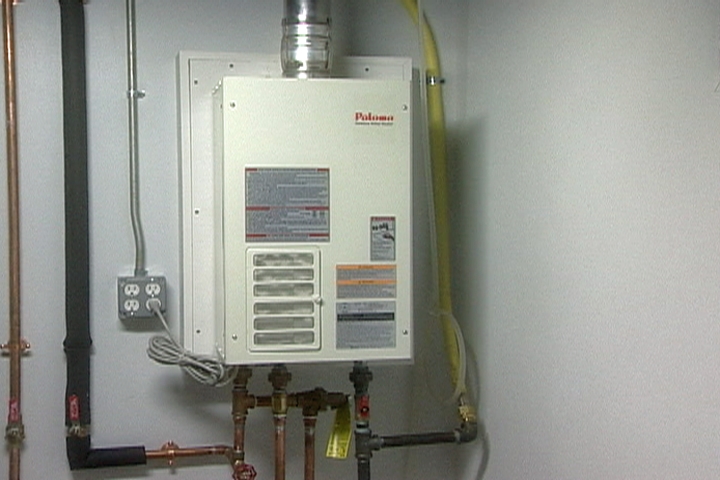We have come across the article about How to Maintain Your Water Heater & Prolong its Life directly below on the web and accepted it made good sense to relate it with you on my blog.

Hot water is vital for day-to-day comfort, whether it's for a revitalizing shower or washing meals. To ensure your hot water system runs efficiently and lasts much longer, routine maintenance is vital. This write-up gives useful pointers and insights on just how to maintain your home's warm water system to avoid disruptions and expensive fixings.
Introduction
Preserving your home's warm water system may appear challenging, however with a couple of simple actions, you can ensure it runs smoothly for several years ahead. This overview covers everything from comprehending your hot water system to DIY upkeep tips and recognizing when to contact specialist help.
Significance of Maintaining Your Hot Water System
Regular maintenance not only prolongs the life-span of your warm water system but likewise ensures it runs successfully. Overlooking maintenance can result in lowered performance, higher power bills, and even premature failure of the system.
Signs Your Hot Water System Demands Upkeep
Understanding when your hot water system requires interest can prevent major issues. Keep an eye out for indicators such as irregular water temperature, unusual noises from the heating unit, or rustic water.
Purging the Hot Water Heater
Flushing your water heater gets rid of debris accumulation, enhancing efficiency and prolonging its life.
Monitoring and Changing Anode Rods
Anode rods avoid corrosion inside the container. Checking and replacing them when worn out is critical.
Complicated Concerns Needing Expert Assistance
Examples include significant leaks, electric issues, or if your water heater is consistently underperforming.
Regular Specialist Maintenance Advantages
Professional upkeep can consist of complete examinations, tune-ups, and guaranteeing compliance with safety standards.
Inspecting and Adjusting Temperature Level Settings
Adjusting the temperature level settings ensures optimum efficiency and security.
Do It Yourself Tips for Maintenance
You can do a number of maintenance tasks on your own to maintain your warm water system in leading problem.
Looking for Leaks
Routinely examine pipes and links for leaks, as these can cause water damages and greater costs.
Comprehending Your Hot Water System
Before diving into upkeep jobs, it's helpful to understand the fundamental components of your warm water system. Normally, this consists of the hot water heater itself, pipelines, anode rods, and temperature level controls.
Monthly Upkeep Tasks
Normal month-to-month checks can assist catch minor issues before they escalate.
Checking Stress Relief Valves
Testing the pressure safety valve ensures it works appropriately and protects against too much stress buildup.
Insulating Pipes
Insulating warm water pipes reduces heat loss and can save power.
When to Call a Professional
While DIY maintenance is helpful, some concerns need expert expertise.
Final thought
Regular maintenance of your home's hot water system is necessary for efficiency, longevity, and cost savings. By following these suggestions and understanding when to seek professional assistance, you can make sure a trusted supply of warm water without unanticipated disturbances.
How to Maintain an Instant Hot Water Heater
Before tinkering with your hot water heater, make sure that it’s not powered on. You also have to turn off the main circuit breaker and shut off the main gas line to prevent accidents. Also turn off the water valves connected to your unit to prevent water from flowing into and out of the appliance. 2. When you’re done, you have to detach the purge valves’ caps. These look like the letter “T” and are situated on either side of the water valves. Doing so will release any pressure that has accumulated inside the valves while at the same time avoid hot water from shooting out and burning your skin. 3. When the purge valves’ caps are removed, you have to connect your hosing lines to the valves. Your unit should have come with three hoses but if it didn’t, you can purchase these things from any hardware or home repair shops. You can also get them from retail stores that sell water heating systems. Read the user’s manual and follow it to complete this task properly. When the hosing lines are connected, open the purge port’s valves. 4. You should never use harsh chemical cleaners or solutions when cleaning your unit. Make use of white vinegar instead. It should be undiluted and you’ll probably use about 2 gallons. 5. Now flush your water heater. This task should probably take about 40 minutes. We can’t give you specific directions for this because the procedure is carried out depending on the type, model and brand of your heater. With that being said, refer to the user’s manual. 6. When you’re done draining the unit, you have to turn off the purge port valves again. Remove the hosing lines that you earlier installed on each of the water valves. Put the valve caps (purge port) back in their respective places and be very careful so as not to damage the rubber discs that are found inside these caps. 7. Now that everything’s back in place, check your user’s manual again to find out how to reactivate your water heating system. 8. Once it is working, turn one of your hot water faucets on just to let air pass through the heater’s water supply pipes. Leave the tap on until water flows smoothly out of it. https://www.orrplumbing.com/blog/2014/september/how-to-maintain-an-instant-hot-water-heater/

I am just very occupied with Tips For Maintaining Your Hot Water Heater and I'm hoping you enjoyed reading the new blog posting. Are you aware of someone else who is fascinated with the subject? Take a moment to share it. Thank-you for your time invested reading it.
Course Detail